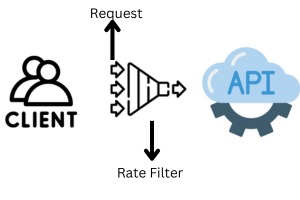Defending Against API Rate Limiting Attacks
Date Created: 11 Nov 2023Share:
In today's interconnected digital landscape, APIs (Application Programming Interfaces) play a pivotal role in facilitating communication and data exchange between different software applications.

Defending Against API Rate Limiting Attacks
In todays interconnected digital landscape, APIs (Application Programming Interfaces) play a pivotal role in facilitating communication and data exchange between different software applications. However, with this increased reliance on APIs comes the risk of security threats, and one of the common challenges is API rate-limiting attacks. In this blog post, we will delve into the significance of API rate limiting, and the vulnerabilities it poses.
Understanding API Rate Limiting Attacks
API rate limiting is a mechanism implemented by organizations to control the number of requests a user or system can make within a specified time frame. It is an essential part of API security designed to prevent abuse, protect against denial-of-service (DoS) attacks, and ensure fair usage. However, attackers often attempt to exploit vulnerabilities in this system through API rate-limiting attacks.
API rate-limiting attacks involve intentionally exceeding the defined request limits, causing service disruptions, slowdowns, or even denial of service. These attacks can have severe consequences, affecting the availability and performance of APIs, disrupting legitimate users, and potentially leading to financial losses for businesses.
Common Techniques Used in API Rate Limiting Attacks
Brute Force Attacks: Attackers may employ automated tools to send a large volume
of requests in quick succession, attempting to overwhelm the API and bypass
rate limits.
Distributed Denial of Service (DDoS): By orchestrating a DDoS attack on an
API, malicious actors can flood the system with traffic, causing service
degradation or complete unavailability.
IP Spoofing: Attackers may disguise their identity by using multiple IP addresses, making it challenging for traditional rate-limiting measures to identify and mitigate the attack.
Preventing API Rate Limiting Attacks
Strengthening Authentication: Ensure that your API incorporates robust
authentication mechanisms, such as API keys, OAuth tokens, or other secure
methods. This is crucial for distinguishing legitimate users from potential
attackers.
Continuous Monitoring and Analysis: Consistently monitor API traffic
patterns and analyse request logs to identify any unusual behaviour. Leveraging
anomaly detection systems can aid in recognizing patterns that may indicate a
rate limiting attack.
Dynamic Rate Limiting: Instead of adhering to fixed rate limits, contemplate the
implementation of dynamic rate limiting based on user behaviour. Adjusting rate
limits according to factors such as usage history, location, and user type
enhances adaptability to evolving threats.
Utilizing Caching Strategies: Integrate caching mechanisms to temporarily store
frequently requested data. This not only reduces the strain on the API server
but also serves as an effective mitigation strategy against the impact
of rate limiting attacks.
Deploying Web Application Firewalls (WAF): Implement WAF solutions to filter and monitor HTTP traffic between a web application and the internet. WAFs excel in detecting and mitigating various types of attacks, including those specifically targeting API rate limits.
Cripsas M2M API Security Service
Cripsas M2M API Security Service offers a robust solution to safeguard APIs against rate-limiting attacks and other security threats. Some key features include:
Adaptive Rate Limiting: Cripsas solution employs adaptive rate limiting algorithms
that dynamically adjust rate limits based on real-time traffic patterns. This
ensures that legitimate users are not unfairly restricted while effectively
blocking malicious activity.
Behavioural Analysis: The M2M API Security Service utilizes advanced behavioural
analysis to identify anomalous patterns in API traffic. This helps in detecting
and mitigating rate limiting attacks in their early stages.
Real-time Threat Intelligence: Cripsas service integrates
real-time threat intelligence feeds, allowing organizations to stay updated on
emerging threats and proactively defend against evolving attack vectors.
Scalability: With Cripsas M2M API Security Service, organizations can scale their API infrastructure without compromising security. The solution is designed to handle high volumes of traffic while maintaining optimal performance.
The
stability and security of digital ecosystems face a considerable threat from
API rate limiting attacks. To bolster API defences against malicious actors,
organizations should embrace a comprehensive strategy encompassing robust
authentication, dynamic rate limiting, vigilant monitoring, and the integration
of advanced security services such as Cripsas M2M API Security. As the digital
landscape undergoes continuous evolution, it is essential for organizations to
implement robust API security measures. These measures are crucial not only for
safeguarding sensitive data but also for ensuring uninterrupted service
availability and fostering trust with users.

